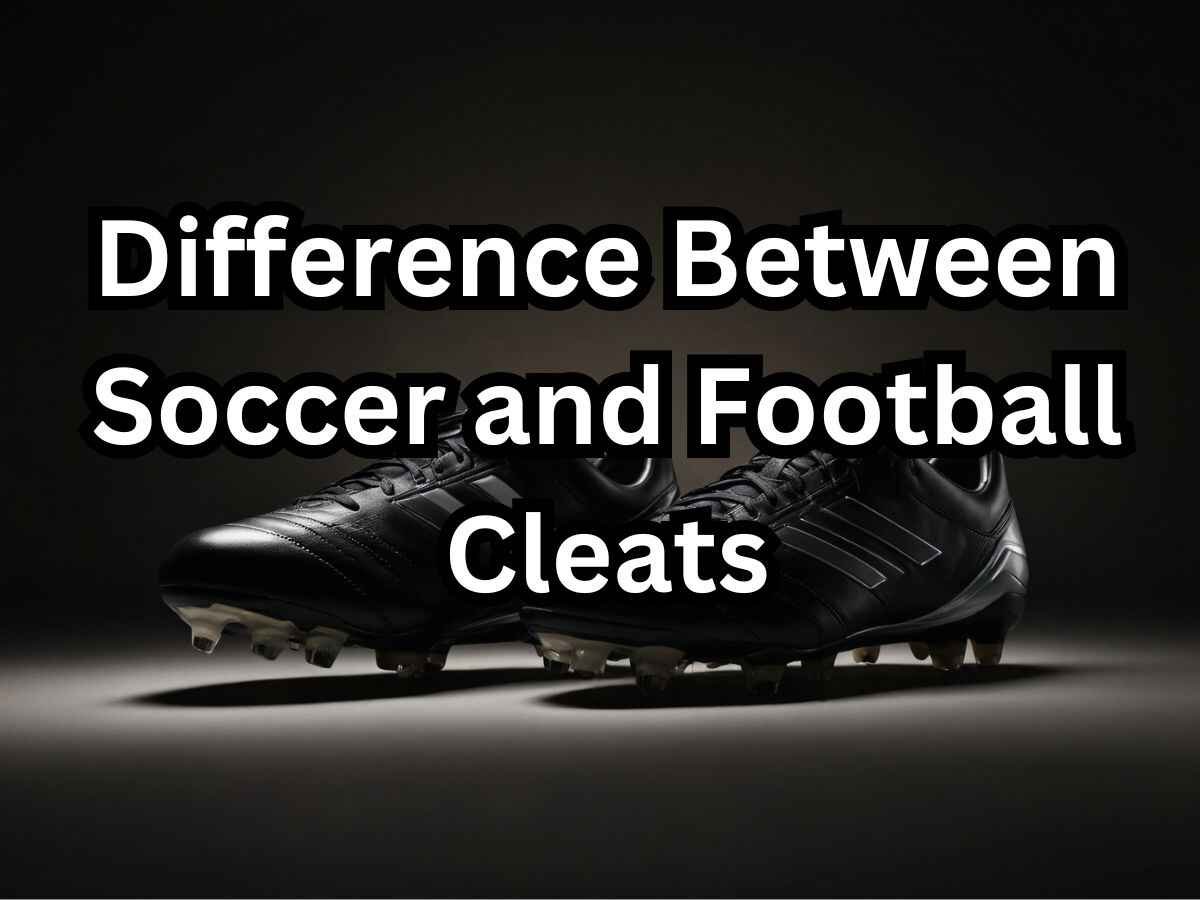The right footwear is essential for excelling in sports like soccer and American football. Cleats play a vital role in enhancing performance, ensuring safety, and adapting to the specific demands of each game. While soccer and football cleats may appear similar, they are engineered differently to cater to the unique needs of these sports. This guide explores their differences in detail, including design, functionality, materials, and how to choose the right pairLearn the difference between soccer and football cleats with simple explanations about their design, studs, and uses. Find the right cleats for your sport!.
Table of Contents
1. Design and Structure
Soccer Cleats:
- Soccer cleats are designed to prioritize ankle mobility, which is crucial for quick turns, sprints, and intricate footwork.
- They are lightweight and lack a midsole, allowing players to feel the ground and the ball for better control.
- The cleat studs are evenly distributed to provide consistent traction and stability on grass and artificial turf without damaging the playing surface.
- The minimalist design ensures they do not interfere with ball handling, passing, or shooting.
Football Cleats:
- Football cleats are available in three styles: low cut, mid cut, and high top. High tops offer extra ankle support, especially useful for linemen and other positions requiring sudden lateral movements.
- They are heavier and bulkier, featuring extra padding to absorb impacts during tackles and collisions.
- The stud arrangement and length are designed to provide traction on uneven or soft fields, supporting explosive movements and quick direction changes.
- The design varies significantly based on the player’s position—for instance, linemen prefer high-top cleats for stability, while wide receivers often opt for low-cut cleats for agility.
2. Stud Configuration
Soccer Cleats:
- The studs are shorter and often rounded or bladed for better grip and comfort on natural and artificial surfaces.
- Soccer cleats lack a front toe stud, as the toe area is frequently used for dribbling, passing, and shooting the ball.
- The uniform stud placement ensures smooth movement and prevents injuries caused by uneven pressure points.
Football Cleats:
- Football cleats have longer, sharper studs that dig deeper into the ground, offering excellent grip during sudden stops and explosive starts.
- Many football cleats include a stud at the front of the shoe for added push-off power, especially beneficial for linemen and running backs.
- The stud placement is more aggressive and position-specific, enhancing performance during high-intensity gameplay.
3. Material Composition
Soccer Cleats:
- Made from lightweight materials like synthetic leather, mesh, or knit fabric to ensure comfort, flexibility, and breathability.
- The focus is on a snug fit that feels like a second skin, helping players maintain optimal control over the ball.
- Modern soccer cleats often include waterproof or weather-resistant coatings to handle varying playing conditions.
Football Cleats:
- Constructed with thicker, more durable materials to withstand heavy impacts and rough play.
- Many football cleats feature reinforced toe caps and extra padding to protect players from injuries during high-contact situations.
- The materials prioritize durability and support over lightweight design, reflecting the sport’s physical demands.
4. Purpose and Functionality
Soccer Cleats:
- Designed for ball control, precision, and speed, soccer cleats enable players to dribble, pass, and shoot with accuracy.
- Their lightweight and low-profile design supports extended periods of running and quick directional changes.
- Suitable for multiple field types, including natural grass, artificial turf, and indoor courts.
Football Cleats:
- Built for protection, traction, and position-specific needs, football cleats support explosive movements and high-impact play.
- Different positions on the field require specialized designs—for example, quarterbacks need versatile cleats, while defensive backs need cleats optimized for agility.
- They’re primarily intended for outdoor grass or artificial turf fields.
5. Fit and Comfort
Soccer Cleats:
- Soccer cleats prioritize a snug fit to ensure the player feels connected to the ball.
- The low-cut design allows for maximum freedom of movement and comfort during long matches.
- Proper fit is essential to prevent blisters and enhance on-field performance.
Football Cleats:
- Football cleats offer varying fits based on the player’s position and preference. High-tops provide more support, while low-cuts focus on agility.
- They are designed with extra padding to cushion the foot during impacts and sudden stops.
- Comfort features include padded collars and insoles to handle the game’s physical demands.
6. Field Adaptability
Soccer Cleats:
- Versatile enough for use on grass, turf, or indoor fields, with specialized cleats available for each surface.
- Designed to prevent damage to delicate playing fields while maintaining optimal performance.
Football Cleats:
- Engineered for grass and artificial turf surfaces, with stud configurations suited for uneven or soft terrain.
- Not ideal for use on hard or indoor surfaces due to their aggressive stud design.
7. How to Choose the Right Cleats
- Sport-Specific Needs: Always choose cleats designed for your sport to ensure they meet the demands of your game.
- Field Type: Consider the surface you’ll be playing on and select cleats with the appropriate stud configuration.
- Position: In football, your playing position influences whether you need high-top, mid-cut, or low-cut cleats.
- Fit and Comfort: Proper fit is essential to avoid discomfort, blisters, or injuries. Try on cleats before purchasing to ensure they feel secure and comfortable.
Conclusion: Difference Between Soccer and Football Cleats
Soccer and football jerseys serve different purposes and are tailored to the unique requirements of their respective sports. Soccer cleats focus on speed, precision, and ball control, while football cleats prioritize protection, support, and traction. By understanding these differences and considering factors like position, field type, and fit, players can choose the right cleats to elevate their game. Whether you’re sprinting down the soccer field or making a tackle on the football field, the right cleats make all the difference.
See Also,

